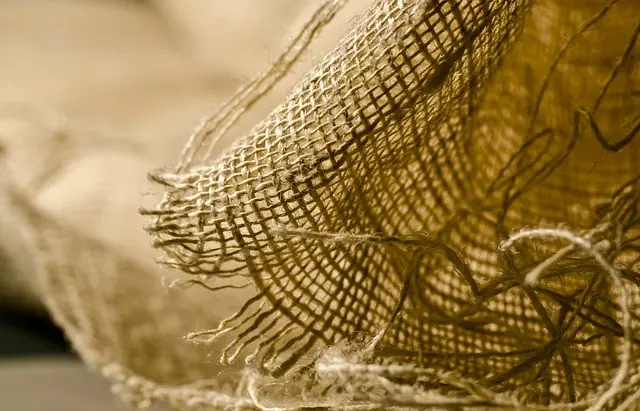The article investigates the potential of kratom, a Southeast Asian plant, for relieving muscle soreness, with its effectiveness attributed to alkaloids like mitragynine and 7-hydroxymitragynine that interact with opioid receptors. To harness kratom's benefits effectively, it's essential to identify the right strain, as different strains such as Maeng Da, Bali, and Red Vein Thai have varying effects on individuals. Factors like vein color, leaf maturity, and alkaloid levels influence these effects, necessitating personal experimentation to find the perfect kratom strain for one's needs. Some users may prefer strains like White Vein Borneo for pain management without loss of energy, while others might choose Red Vein Indo for its calming properties. It's crucial to use kratom responsibly, adhere to recommended dosages, and consult healthcare professionals before use due to potential side effects and legal considerations. The article advises on the importance of choosing high-quality kratom from reputable sources for the best results and a safe experience.
Muscle soreness can be a persistent and uncomfortable challenge for many, often arising from intense exercise or physical labor. Seeking relief, individuals are increasingly turning to natural alternatives like kratom, a tropical plant whose leaves have been used traditionally in Southeast Asia for their stimulating and analgesic effects. This article delves into the therapeutic potential of kratom, specifically focusing on identifying the perfect kratom strain for muscle soreness relief. We explore the complex alkaloid profile within kratom that contributes to its pain-relieving properties, and provide guidance on how to optimize your experience with this plant-based remedy. Whether you’re an athlete recovering from a workout or someone dealing with chronic pain, understanding kratom’s role in muscle soreness relief could offer a pathway to natural comfort. Join us as we unravel the science behind kratom and its impact on alleviating muscle discomfort.
- Unraveling the Effects of Kratom on Muscle Soreness: The Role of the Perfect Kratom Strain
- Understanding Kratom's Alkaloids and Their Impact on Pain Relief
- Optimizing Your Kratom Experience for Maximum Muscle Soreness Relief
Unraveling the Effects of Kratom on Muscle Soreness: The Role of the Perfect Kratom Strain

Kratom, a tropical evergreen tree native to Southeast Asia, has garnered attention for its potential effects on muscle soreness. The alkaloids present in kratom leaves, particularly mitragynine and 7-hydroxymitragynine, are believed to interact with the body’s opioid receptors, which may contribute to its analgesic properties. When it comes to addressing muscle soreness, the quest for the perfect kratom strain is paramount. Users often report that certain strains of kratom seem more effective than others in alleviating discomfort associated with muscle strain or fatigue. The optimal strain may vary depending on individual physiology and the intensity of the muscle soreness experienced; however, strains such as Maeng Da, Bali, or Red Vein Thai are frequently cited for their potent effects.
The efficacy of a kratom strain in providing relief from muscle soreness can be influenced by several factors, including the plant’s vein color, leaf maturity at harvest, and alkaloid concentration. Users may experiment with different strains to determine which one aligns best with their unique needs. For instance, some individuals may find that a more energetic and stimulating strain, like White Vein Borneo, helps to manage muscle soreness while maintaining a high level of activity. Conversely, those seeking relaxation alongside pain relief might prefer a sedating strain like Red Vein Indo. It’s important for users to approach the use of kratom with caution and to adhere to recommended dosages to avoid adverse effects. Consultation with a healthcare provider is essential before incorporating kratom into any regimen for muscle soreness relief.
Understanding Kratom's Alkaloids and Their Impact on Pain Relief

Kratom, a tropical tree native to Southeast Asia, has garnered attention for its potential analgesic properties. At the heart of kratom’s pain-relieving capabilities are its unique alkaloids, primarily mitragynine and 7-hydroxymitragynine. These compounds interact with the body’s opioid receptors, offering relief from muscle soreness without the side effects commonly associated with prescription painkillers. The alkaloid profile of kratom strains varies, which is why identifying the perfect kratom strain for an individual’s specific needs is crucial. For instance, strains such as Bali or Maeng Da are known for their robust pain-relieving effects, while others like White Borneo or Green Malay may provide a more balanced experience, combining both stimulating and sedative properties. Understanding the interplay between these alkaloids and their individual impact on pain relief can help users find the most effective kratom strain for their muscle soreness. It’s important to approach kratom with caution, as the optimal dosage and the right strain can significantly influence its efficacy and safety profile. Users should consult with healthcare professionals before integrating kratom into their pain management regimen, especially given the legal status of kratom in various regions and its potential for interaction with other substances or medications.
Optimizing Your Kratom Experience for Maximum Muscle Soreness Relief

When seeking to alleviate muscle soreness, finding the perfect kratom strain can significantly enhance your relief experience. The key to optimizing your kratom experience lies in understanding the nuanced effects of different strains and how they interact with your body’s response to exertion-induced pain. Maeng Da Kratom is often revered for its balanced alkaloid profile, which may offer potent analgesic properties. Its stimulating yet soothing effect can help manage discomfort without inducing drowsiness, making it ideal for those who are active and require daytime relief. For a more sedating experience that’s conducive to rest and recovery, Bali Kratom is another excellent option. It’s known for its calming influence, which can aid in easing tension and promoting a deeper state of relaxation.
To further refine your kratom regimen for muscle soreness relief, consider dosage and frequency based on your body’s unique response. It’s generally recommended to start with a lower dose to gauge its effects before gradually increasing if needed. Additionally, timing your intake can be crucial; taking kratom after a workout or when you first notice soreness may offer the best results. As with any supplement, consistency is key, but it’s equally important to listen to your body and adjust as necessary. Regular monitoring of your symptoms and how different strains and dosages affect you will help you pinpoint the perfect kratom strain and routine for maximum muscle soreness relief. Always source high-quality, ethically harvested kratom from reputable vendors to ensure the best experience and outcomes.
Muscle soreness can be a significant impediment to maintaining an active lifestyle, but the integration of kratom may offer a promising avenue for relief. This article has explored the multifaceted effects of kratom on muscle soreness, highlighting the importance of selecting the perfect kratom strain to optimize its analgesic properties. By delving into the alkaloids present in kratom and their roles in pain mitigation, readers now have a clearer understanding of how this natural substance can contribute to muscle soreness relief. For those seeking a potent solution to alleviate discomfort, carefully considering the strain’s characteristics and employing it judiciously as part of a comprehensive wellness regimen could be beneficial. As research continues to evolve, the potential role of kratom in pain management is an exciting area to monitor for both health enthusiasts and professionals in the field of natural remedies.






